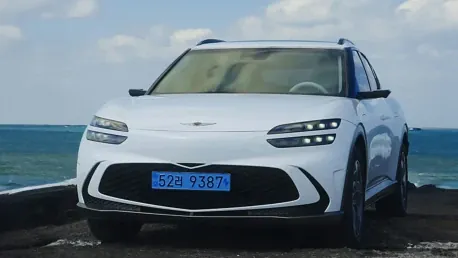The electric vehicle (EV) market in China has been growing exponentially, leading the global charge in the adoption and manufacturing of electric cars. This boom is driven by a mix of regulatory support, technological innovation, and consumer interest. However, there are signs indicating that the rapid expansion might not be sustainable in the long run, posing the question: Is the boom setting the stage for an inevitable bust?
The Competitive Landscape of China’s EV Market
The Race for Market Supremacy
In China’s bustling EV market, domestic and international companies are engaged in fierce competition for dominance. This race is not only about who sells the most vehicles but also about staying ahead in technology and customer satisfaction. The intensity of this competition pushes companies to their limits, prompting speculation about who can sustain growth and who will falter. Contenders are investing heavily in research and development while seeking to expand their market reach through various strategic partnerships and aggressive marketing campaigns.
Survival of the Fittest Amidst Intense Price Wars
As the battle for market share heats up, price wars become inevitable. With Tesla’s price cuts triggering a domino effect, automakers scramble to offer lucrative deals. The question remains: How long can firms operate on thin margins before financial sustainability becomes a critical concern? A strategic pricing strategy, combined with cost-cutting measures, is essential for manufacturers to maintain a competitive edge without compromising their financial health. Companies that fail to align their costs with their pricing tactics may soon find themselves unable to compete in this cutthroat market.
The Overcapacity Problem and Market Oversaturation
Battling Overproduction
The Chinese EV market is currently grappling with the issue of overcapacity. Manufacturers are churning out more models than the market can absorb, creating an imbalance that may lead to detrimental consequences for the less competitive players. As they struggle to find buyers, some manufacturers are forced to re-evaluate their market position. Massive investments poured into capacity expansion now loom as miscalculated gambles for some companies as they navigate the challenging waters of oversupply and tepid demand.
The Influx of New Models and Implications
The launch of over 110 new EV models this year exacerbates the problem of oversaturation. While this variety provides more choices for consumers, it also highlights the stark reality of an impending supply glut. The strategic planning of production lines and innovation in design become even more critical in such a cluttered landscape. Manufacturers must respond to current trends and anticipate future market directions to avoid the pitfalls of short-sightedness that often accompany rapid expansion.
The Projection of Market Consolidation
Experts Weigh In on Future Outcomes
Many industry leaders and analysts predict that the Chinese EV market will witness significant consolidation by the decade’s end. As smaller players struggle, the market may eventually be controlled by a few dominant firms. This consolidation is seen as both a natural economic cycle and a necessary step toward a more efficient and sustainable industry. The trajectory of consolidation suggests that companies with strong financial backing, advanced technological capabilities, and aggressive market strategies will likely survive the fray.
The Impact of Evolving Consumer Preferences and Technology
As the market braces for a potential shake-out, changing consumer preferences and technological advancements continue to shape the competitive environment. Companies that can adapt quickly and offer innovative solutions are more likely to survive and thrive in the long term. Constant engagement with consumers to gauge shifting trends and the ongoing development of cutting-edge, cost-effective technologies remain essential for companies hoping to lead the pack.
The Role of International Competitors
The Challenge for Foreign Brands
Foreign electric vehicle brands like Tesla, which once enjoyed a strong presence in China’s EV market, now face increasing pressure from local manufacturers. This dynamic not only influences market strategies for multinational corporations but also raises questions about the future landscape of international competition within China’s EV space. Adapting and responding to the unique preferences of Chinese consumers, as well as navigating the complex regulatory environment, are crucial for foreign brands aiming to maintain their foothold.
The Advantages of Domestic Players
Chinese auto manufacturers such as BYD have gained significant ground, with some even surpassing international giants in sales. Their success can be attributed to various factors, including cost advantages, an understanding of the local market, and the ability to innovate swiftly. It is a tough environment for foreign entrants and even tougher for those who do not continue to evolve. The deep local knowledge and the nimbleness of Chinese companies give them a formidable advantage in this competitive space.
Looking Forward in China’s Evolving EV Market
Market Share Predictions and Future Growth
Despite the challenges, there is a consensus that the EV market in China will not only persist but also thrive. Projections suggest that EVs could account for a substantial portion of the nation’s car market in the near future, driven by competitive pricing, policy support, and advancements in battery technology. But which companies will lead the charge? Strategic positioning and technological leadership will be key determinants in identifying the frontrunners in this race.
Adapting to Survive in a Cutthroat Industry
The electric vehicle (EV) market in China has seen remarkable growth, becoming a global leader in the electric car industry. This surge is supported by various factors, such as governmental policies that encourage EV adoption, advancements in EV technology, and a growing interest from the Chinese consumer base. These incentives, alongside substantial investments, have helped to accelerate the production and sales of EVs within the country.Despite the impressive growth, there are concerns about the longevity and stability of the EV market’s expansion in China. The potential for market saturation, reliance on government subsidies, and increasing competition both domestically and internationally might lead to a slowdown. Additionally, there may be challenges in maintaining the pace of technological innovation and production quality amid such rapid growth.This situation raises important questions about the future of China’s EV market. Is the current boom in the industry a precursor to a bust? Could the industry experience a significant contraction if current trends are not sustainable? The interplay of market dynamics, policy support, consumer demand, and technological progress will be crucial in the coming years as China navigates the potential hurdles in maintaining its lead in the EV marketplace.









